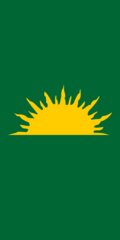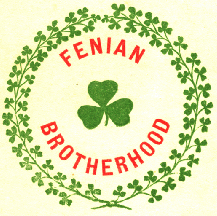
The Fenian Brotherhood was an Irish republican organisation founded in the United States in 1858 by John O'Mahony and Michael Doheny. It was a precursor to Clan na Gael, a sister organisation to the Irish Republican Brotherhood (IRB). Members were commonly known as "Fenians". O'Mahony, who was a Gaelic scholar, named his organisation after the Fianna, the legendary band of Irish warriors led by Fionn mac Cumhaill.

The Irish Republican Brotherhood was a secret oath-bound fraternal organisation dedicated to the establishment of an "independent democratic republic" in Ireland between 1858 and 1924. Its counterpart in the United States of America was initially the Fenian Brotherhood, but from the 1870s it was Clan na Gael. The members of both wings of the movement are often referred to as "Fenians". The IRB played an important role in the history of Ireland, as the chief advocate of republicanism during the campaign for Ireland's independence from the United Kingdom, successor to movements such as the United Irishmen of the 1790s and the Young Irelanders of the 1840s.
Irish republicanism is the political movement for an Irish republic, void of any British rule. Throughout its centuries of existence, it has encompassed various tactics and identities, simultaneously elective and militant and has been both widely supported and iconoclastic.
Clan na Gael (CnG) (Irish: Clann na nGael, pronounced[ˈklˠaːn̪ˠn̪ˠəˈŋeːlˠ]; "family of the Gaels") is an Irish republican organization, founded in the United States in the late 19th and 20th centuries, successor to the Fenian Brotherhood and a sister organization to the Irish Republican Brotherhood.

James Stephens was an Irish Republican, and the founding member of an originally unnamed revolutionary organisation in Dublin. This organisation, founded on 17 March 1858, was later to become known as the Irish Republican Brotherhood (I.R.B).

The Young Irelander Rebellion was a failed Irish nationalist uprising led by the Young Ireland movement, part of the wider Revolutions of 1848 that affected most of Europe. It took place on 29 July 1848 at Farranrory, a small settlement about 4.3 km north-northeast of the village of Ballingarry, South Tipperary. After being chased by a force of Young Irelanders and their supporters, an Irish Constabulary unit took refuge in a house and held those inside as hostages. A several-hour gunfight followed, but the rebels fled after a large group of police reinforcements arrived.
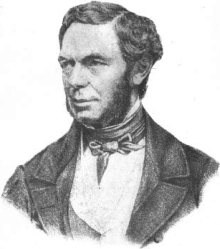
Michael Doheny was an Irish writer, lawyer, member of the Young Ireland movement, and co-founder of the Irish Republican Brotherhood, an Irish secret society which would go on to launch the Fenian Raids on Canada, Fenian Rising of 1867, and the Easter Rising of 1916, each of which was an attempt to bring about Irish Independence from Britain.

Charles Joseph Kickham was an Irish revolutionary, novelist, poet, journalist and one of the most prominent members of the Irish Republican Brotherhood.
The term New Departure has been used to describe several initiatives in the late 19th century by which Irish republicans, who were committed to independence from Britain by physical force, attempted to find a common ground for co-operation with groups committed to Irish Home Rule by constitutional means. In the wake of the Fenian Rising of 1867 and the unpopular executions which followed it, Fenianism was popularised and became more moderate, while the Home Rule movement was edging toward radicalism at the same time, laying the framework for the alliance. The term was coined by John Devoy in an anonymous article in the New York Herald on 27 October 1878 in which he laid out a framework for a new policy.
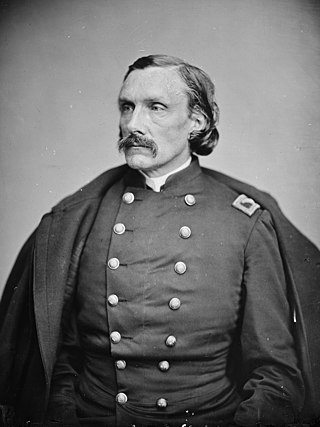
John Francis O'Mahony was an Irish scholar and the founding member of the Fenian Brotherhood in the United States, sister organisation to the Irish Republican Brotherhood. Despite coming from a reasonably wealthy family and being well educated, the primary pursuit of O'Mahoney's life was that of Irish Independence from the United Kingdom, a calling that ultimately left him in poverty. O'Mahony fought in the Young Irelander Rebellion of 1848 as well as the American Civil War, and was involved organisationally in the Fenian Rising of 1867 in Ireland and the Fenian Raids on Canada.
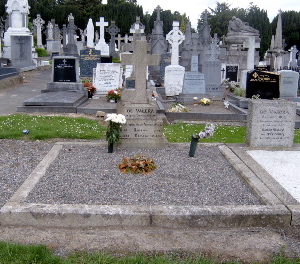
This is a list of notable people buried in Glasnevin Cemetery.
Philip Gray was an Irish republican, revolutionary and a member of the Irish Confederation. He took part in the Risings of 1848 and 1849 along with James Fintan Lalor and both James Stephens and John O'Mahony, who would go on to establish the Irish Republican Brotherhood in Ireland and the Fenian Brotherhood in the United States.

Thomas Clarke Luby was an Irish revolutionary, author, journalist and one of the founding members of the Irish Republican Brotherhood.

The word Fenian served as an umbrella term for the Irish Republican Brotherhood (IRB) and their affiliate in the United States, the Fenian Brotherhood. They were secret political organisations in the late 19th and early 20th centuries dedicated to the establishment of an independent Irish Republic. In 1867, they sought to coordinate raids into Canada from the United States with a rising in Ireland. In the 1916 Easter Rising and the 1919–1921 Irish War of Independence, the IRB led the republican struggle.
The Phoenix National and Literary Society was an 1856–1859 Irish nationalist organisation based in West Cork. It was established in Skibbereen in December 1856 by Jeremiah O'Donovan Rossa, as a revival of the Young Ireland movement suppressed after its 1848 rebellion. Its aim was to encourage intellectuals to become nationalists and vice versa as well as to encourage a Gaelic revival. It was suppressed as seditious in 1859.

Denis Dowling Mulcahy was a leading member of the Irish Republican Brotherhood and a medical doctor.

The Fenian Rising of 1867 was a rebellion against British rule in Ireland, organised by the Irish Republican Brotherhood (IRB).
Cornelius O'Mahony was a Gaelic scholar, teacher, Fenian and staunch supporter of Irish independence. He was tried and convicted of conspiracy and sentenced to prison, only to be later transported to Australia.
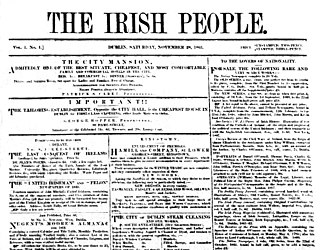
The Irish People was a nationalist weekly newspaper first printed in Dublin in 1863 and supportive of the Fenian movement. It was suppressed by the British Government in 1865.
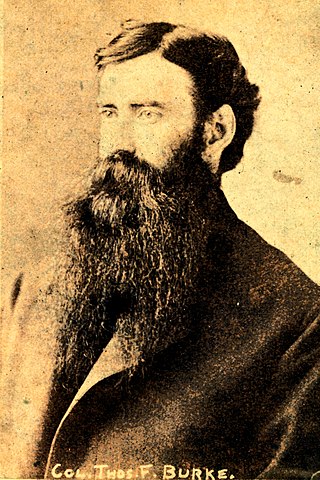
Thomas Francis Bourke was an Irish soldier who fought in the American Civil War on behalf of the Confederacy and who was later a member of the Fenian Brotherhood, a revolutionary organisation linked to the Irish Republican Brotherhood that sought to establish an independent Irish Republic separate from the United Kingdom. He took part in the Fenian Rising of 1867, and was initially sentenced to death for his role in it. His sentence was later commuted before he was released as part of a general amnesty, conditional on going into exile.
















